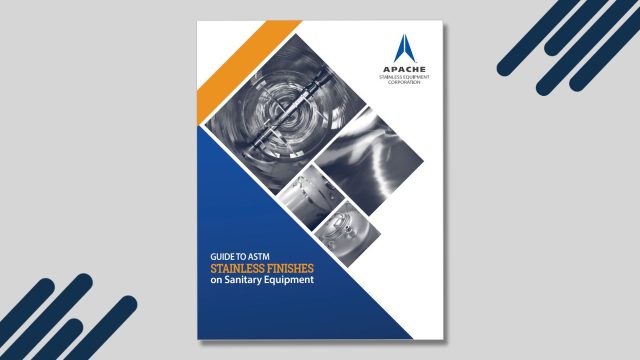
ASTM (American Society for Materials and Testing) was developed to set standards for chemical, mechanical, physical, and electrical properties of material, as well as testing standards for materials. ASME (American Society of Mechanical Engineers) includes ASTM standards, AWS (American Welding Society) standards and other nationally and internationally recognized standards as part of a widely adapted design specification for many structures, including pressure vessels.
Apache has substantial capabilities for mechanical and chemical finishing having supplied stainless equipment to hygienic industries for more than four decades. Passivation, pickle passivation and electropolishing processes and associated ASME testing, and processes are 100% in-house.
Passivation is the removal of excess iron or iron compounds from the surface of stainless steel by means of a chemical, typically an acid based solution. Unlike pickle passivation, no metal is removed from the surface during the process. The process has little effect on the RA values of the stainless material being passivated.
The ASTM A967 is a passivation standard that applies to the cleaning, passivation, and testing of stainless parts.
Pickle Passivation is the immersion of the metal in a pickling bath or coating the material with pickling solution such as nitric-hydrofluoric acid. The process removes both metallic contamination and heat-treating scales. Pickle passivated stainless steel has a matte appearance. Apache’s tests have confirmed improvements up to 25% in RA readings on material that has been pickle passivated.
The ASTM A380 is a passivation standard that covers cleaning, descaling, and passivating stainless material and parts. Spec A380 may include a variety of treatments, including precleaning, chemical descaling, degreasing and more.
Electropolishing is an electro-chemical process that removes surface material from stainless steel. The process includes immersion of the stainless-steel component into a temperature-controlled bath of electrolytes that are charged with a DC power supply. Electrolytes used in electropolishing are concentrated sulfuric and phosphoric acid solutions. The finish has a mirror appearance. Apache’s before and after tests have shown improvements in RA smoothness up to 50%; results vary depending on stainless material.
The ASTM B912 specification outlines the electropolishing process for 200, 300 and 400 series alloys. Spec B912 may include preparatory cleaning procedures, post coating procedures and rinsing protocols. Final testing is also stated in the specification to evaluate performance of finish.
In Guide to ASTM & ASME Stainless Finishes, learn about the mechanical and chemical finishing processes to meet ASME, ASTM and other compliance requirements.
